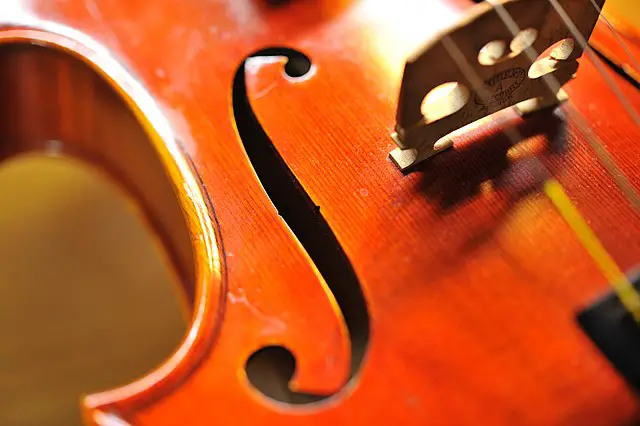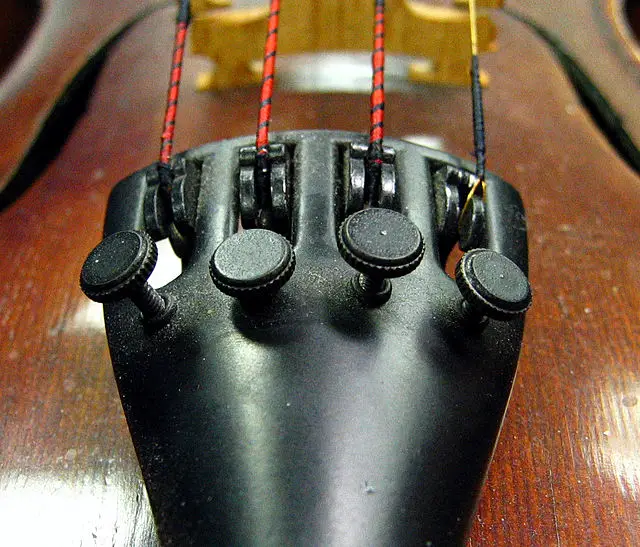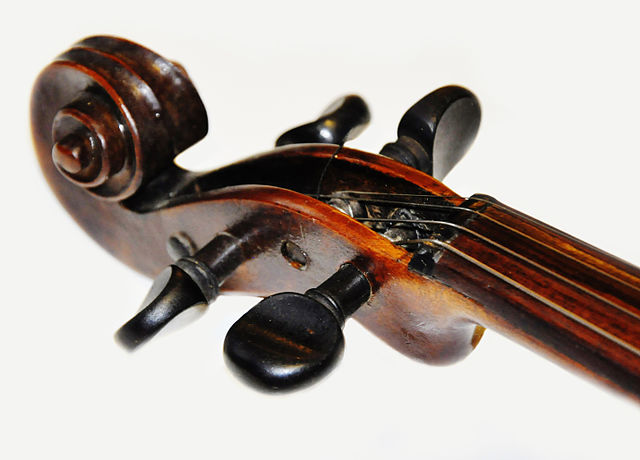Not only is the violin one of the most difficult instruments to master, but it’s also one of the most demanding instruments when it comes to care and maintenance. Violins go out of tune for various reasons ranging from changing weather conditions to slipping pegs.
In today’s article, we discuss the reasons why violins go out of tune, how long these instruments stay in tune, how often you should tune your violin, and how to stop it from going out of tune too often.
This is Why Violins Go Out of Tune:
Violins can go out of tune due to many reasons: fitting new strings which stretch, changes in temperature, and bumps or knocks. Ensure pegs are correctly wound and that the Violin remains at a constant temperature to mitigate de-tuning.
Table of Contents
What Makes Violins Go Out of Tune?
All violins go out of tune, even the most expensive ones. Granted, the latter may not experience it as frequently, but it still happens. The question is, why? What makes a violin go out of tune?
Well, as you can see below, there are various possible reasons why a violin could go out of tune:
- If you’ve just fitted your violin with new strings, they’ll need some time to stretch and fully settle. The exact duration depends on the type of strings you’re using.
Most modern violin strings that are made of metal will settle within a couple of days. However, synthetic strings and gut strings will take longer, completely settling after a week or two.
You can speed up the stretching/settling process by practicing and playing more. Note that you’ll need to tune more frequently while playing during this process.
- Weather conditions surrounding the violin can heavily affect the strings and the instrument, causing it to go out of tune. It doesn’t even need to be a drastic change: a minor shift in atmospheric pressure can be enough to alter the violin’s tune.
A change in humidity levels can also make a violin go out of tune, especially when the air becomes drier outside. This is why the end of fall and the beginning of winter witness many broken strings and bows; it’s generally a very dry period.
Keep in mind that violins are made out of wood (more than one type to be accurate), which expands and contracts with changes in temperature.
- Bumps can also alter the tuning of your violin. If you’ve knocked or bumped your instrument by accident against the stand, your violin will require re-tuning.
If you drop your violin, the same thing will happen. It’s also a possibility if you tend to carry your violin in your car’s trunk.
You should be aware that bumps and drops can cause the soundpost to shift out of proper position or fall down. If it does fall, you should immediately loosen the strings and don’t play until the soundpost is re-fitted correctly to avoid further damage.

How Long do Violins Stay in Tune for?
Violins are very prone to going out of tune simply due to their construction material and design.
The longest a violin can go without tuning would probably be two days. Returning on a daily basis is quite common. And more professional players normally tune their instruments before each session, so twice or more each day is perfectly understandable.
In fact, you’d see the violinists in an orchestra adjusting their violins after a Brahms movement. The intense bow movement often affects the tension of the strings, and a little tweak is often necessary at some point during the concert.
How to Tell if a Violin is Out of Tune?
The more you practice and play, the easier it’ll be for your ear to pick up on changes in sound when your violin goes out of tune and needs re-tuning.
As we’ll mention below, you should tune your violin every time you play. It’s part of being a violinist.
If you practice every day and your strings are fully stretched and well settled, you’ll probably only need to make minor adjustments to the pitch of your strings using the fine tuners.

But if your instrument has been sitting and collecting dust for more than a few days, expect to spend some time tuning it back to perfect. You’ll more than likely need to first tune the instrument with the pegs, followed by the fine tuners.
How Often Should You Tune Your Violin?
You should tune your violin every time you play.
However, occasionally professionals will adjust their playing if the instrument becomes out of tune. This is because your violin may go out of tune during performances, and you can’t tune your instruments during a performance. As such, your intonation needs a degree of flexibility and your practice should prepare for this situation.
Fun fact: Sometimes even strings break during performances! Then the Violinist will need to re-fit and tune the string during the performance.
Keep in mind that all violins go out of tune, the most expensive ones included. Each time before playing, you should tune your violin because you never know how your strings and instruments will adapt to the environment.
Even if your violin was perfectly tuned an hour ago, you could’ve been in an air-conditioned practice room and now you moved to a warm hall, which is going to make the instrument go out of tune.
If warming up before a performance, the violin can go out of tune. It only becomes problematic if your violin goes out of tune while you’re playing. Even in this case, it’s not uncommon for violinists to tweak their instruments a few minutes into playing.
Does the Weather Impact Violins in Going Out of Tune?
The weather conditions surrounding a violin can significantly affect the strings and the instrument, causing it to go out of tune. This is because violins are made out of wood (more than one type to be accurate), which expands and contracts with changing weather conditions.
It doesn’t even need to be a drastic change, a minor shift in atmospheric pressure can be enough to alter the violin’s tune. A change in humidity levels can also sabotage the tuning of your violin, especially when the air becomes drier outside.
This is why the end of fall and the beginning of winter causes more broken strings and bows; it’s generally a very dry period.
How to Stop Your Violin Going Out of Tune
The following are some tips to make sure your violin doesn’t go out of tune too often:
- Check the way your violin’s strings are wound around the peg. The strings should be wound around the peg in a manner that pulls the peg inside the box.
The strings shouldn’t cross themselves and shouldn’t push the ped outside of the box. The winding has to be done neatly as it influences the overall stability of the tuning job.
- Soap the pegs using special peg soap or compound, which resembles wax. This will push the pegs deeper into the pegbox and help them stick in place. Also, this will make the pegs turn more smoothly so it’s easier to tune your violin.
- Change the strings as they may be too old and worn down that they affect the tuning. If a string is damaged, its tuning will be unstable.
- Similarly, replace the pegs if they seem distorted or are worn out. You can also have their shape restored if their condition isn’t too bad.
Some violinists can do this on their own, but players leave this job for the professionals. Keep in mind that you can’t simply buy pegs and install them because they always require cutting to specifically fit your violin.
- Install geared pegs as they don’t turn inside the pegbox. Instead, they’re fixed and only the inside part turns (which the string is wound around). Often the Double-bass will use geared pegs due to the larger strings required and the higher string tension.
- Try to keep the temperature and humidity level in your practice room as consistent as possible. Since they’re made of wood, violins respond to changes in weather conditions. This includes when the air is too dry and when you turn on an air conditioner.
How to Fix Slipping Pegs on a Violin
Check the Way Strings Are Wound Around the Peg
There are three ways to wind the strings around the peg with one method being the best.
The strings should be wound around the peg perfectly straight and parallel to one another.
Crossing and bridging should be avoided, as it often creates excessive tension on the peg. This eventually pulls the peg from its correct position on the pegbox and you end up with a slipping peg.
Another mistake is winding the strings in a direction that pulls the pegs out of the pegbox. In such cases, the violinists find that the string tension changes soon after they start playing.
The right way to do this is to wind the strings around the pegs in a direction that keeps the pegs more attached to their place in the pegbox. Thus, the more the violinist plays, the more stable the pegs are.
Soap the Pegs
The soap violinists use here isn’t actually a detergent at all. It’s a substance that’s more like wax. It’s a formula that’s been used for hundreds of years to help in the proper tuning of string instruments.
Applying the peg soap lubricates the pegs so that they can turn smoothly for easier tuning. Additionally, this wax keeps the pegs well attached to their holes, and pulling them out becomes much harder. This reduces pegs slipping.
Change the Strings
The strings of a violin act directly on the pegs. Strings pull at pegs and apply varying degrees of pressure depending on how their tension changes.
In normal conditions, where the strings are in a good condition and their winding is correct, this dislocating effect is minimal. However, worn-out strings can affect the stability of the pegs significantly.
Newer strings and changing strings regularly may prevent loosening the pegs from the pegbox.
Change the Pegs
When all else fails to fix the slipping pegs situation, consider changing the pegs themselves.
Pegs don’t come as a ready-made set, manufactured in a one-size-fits-all template. They vary greatly from one violin to the next.
You may find pegs with a tighter fit less prone to slipping.
Adjust the Humidity of the Room
A dry environment often sucks some of the humidity out of the pegs. This, in turn, decreases their diameter, and they become loose. Once that happens, the slightest slippage would throw the strings off tune.
This often happens in places that depend on air conditioning fully, or during the winter months. Just keeping the room humidity within acceptable ranges could eliminate the problem.
Care should be taken as a sudden rise in humidity isn’t too good either. In this case, all the parts of the violin start expanding and this sends everything out of whack, not just the pegs.

Wrap Up
It’s normal for violins to require re-tuning frequently, but why do violins go out of tune so often?
Due to their construction and design, many reasons can cause violins to go out of tune but this is part and parcel of playing the violin. However, there are some things you can do to mitigate this such as ensuring your pegs are correctly wound, applying wax to the surface and ensuring the violin remains at a consistent temperature.
